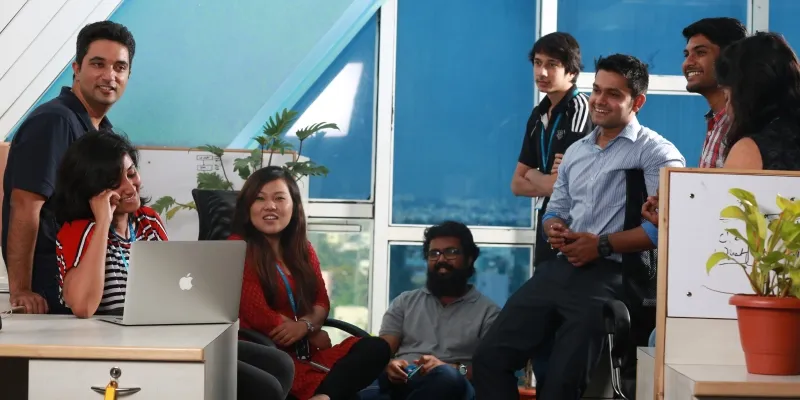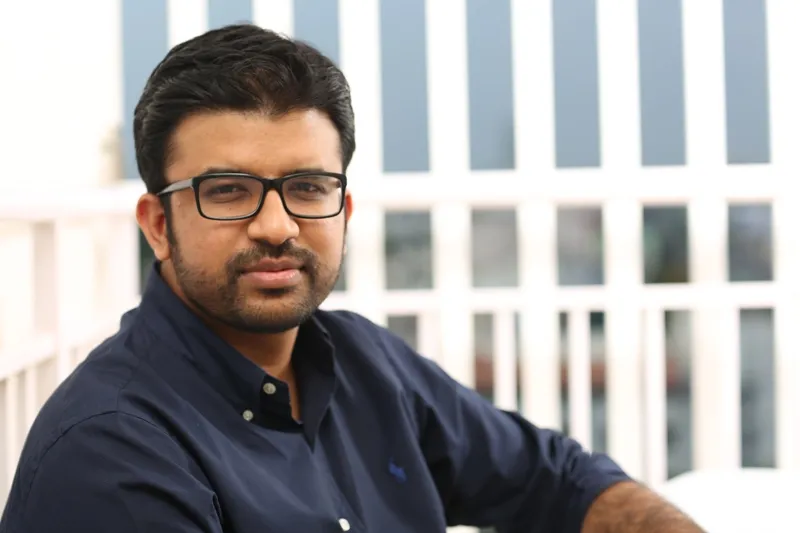After Tencent, Yuri Milner, Sofina, Sequoia, Google Capital, Altimeter, and Matrix, what's next for Practo
It all began with a funding announcement by Practo that set the digital healthcare ecosystem in a buzz. But this wasn't just another funding announcement: it was a USD 90-million Series C funding, led by Tencent, with participation from Sofina, Sequoia India, Google Capital, Altimeter Capital, Matrix Partners, Sequoia Capital Global Equities, and Yuri Milner. These names in themselves are enough to stop you and get your attention. But Practo is looking at this investment as just another step to become great and 'do great.'
In all its announcements, Practo talks about bigger product lines, market expansions and more acquisitions. After raising USD 30 million earlier this year, the company acquired digital fitness solutions startup Fitho in April and Genii in July. However, this isn't the end of the line of acquisitions for this digital healthcare player. Shashank ND, the Co-founder and CEO says that by the end of FY' 15 there will be half a dozen more acquisitions.
Acquisitions in line
"Currently, Practo has created a search platform for doctors, healthcare and diagnostic centres. We're now looking to make Practo the Google for any information needed in the space of healthcare. Whether you need a doctor, surgeon, dentist, veterinarian or a diagnostic checkup, we will have it all at Practo," says Shashank.
He adds that the company is also looking to move into fitness and wellness segments and preventive healthcare. Looking at the larger segment of healthcare and its subsets, Practo will be acquiring organisations that are aligned to their vision and goal.
Shashank says that ‘Practeons’ look at acquisitions in a different way. He explains that the idea isn't to just acquire a company but about the team and product they've built. "It probably would be a product that we would have built ourselves, but when someone has already built it, we want to work and collaborate with their team. If we join forces we can build something greater. This feeds our idea of culture of ‘startups within startups’," he adds.

What kind of acquisitions will Practo make?
Shashank says Practo is looking at products that are in sectors not part of its platform yet, while still maintaining the culture of startups.
"When you become a large company it's important that you don't lose the speed and agility that you've had as a smaller company. Internally, we are designed in such a way that these startups can work in their independent and different styles," adds Shashank. He says that they are looking at two key things when acquiring organisations:
- The alignment of the vision. This, according to Shashank, is a very powerful tool to change the game. He says that Practo is working towards changing the way the healthcare industry works.
- Products that are part of the healthcare ecosystem and can be of strategic importance to Practo. Citing a hypothetical example, Shashank says that the information systems that pharmacies use could be powered by software. If these information systems are connected to the Practo platform, then the innovation in the pharmacy space can be taken to a new level.
The time is ripe for acquisitions at the global level too, especially in the healthcare segment. GE Healthcare has made several technological acquisitions in the past year and is expected to make several others.
Shashank says the company follows an inbound approach when it comes to acquisition strategies.
We believe that as long as you're doing great work people will notice you. We've never written to a VC or a media house on our own, we've just done our work and that has been appreciated and noticed. We've let everyone know of our intent in aligning with people and organisations of the same vision, so we allow them to reach out and if they have the intent then it's a great symbiotic relationship," adds Shashank.
Market expansions
While speaking of newer market expansions, Shashank says that Practo will be looking at markets with similar healthcare needs like the Indian markets. Elaborating, he says that the technology penetration in healthcare is not just emerging in markets like Southeast Asia, but even in the Middle East and Eastern European markets.
This is rather interesting to note as 2012 reports suggest the total spending in the segment accounted for only 3.9 per cent of the Southeast Asian GDP. Shashank also adds that the region needs a stronger penetration for healthcare technologies. The other markets include Middle East, Eastern Europe and Latin America, as they are similar to India with regards to out-of-pocket spends, private spends, healthcare, internet connectivity, and mobile penetration.
Building a single Indian global brand
Of the company’s business strategy, Shashank notes: "We are building a global product with a global platform for the world’s leading platforms. The team intends to build the product and scale out of India, while merging the culture of the new market by creating local teams there.
The company has sent a few people from India to seed the new geography and begin setting up the team and the offices in the new markets. "We ensure that people who are recruiting there have recruited people in India, before" adds Shashank. He says that while looking at building the local teams, the Practeons ensure that the people selected are aligned to the vision of the organisation. "The operations and sales happen locally but they will be following a standardised protocol," he says.

"We have clear and straightforward brand positioning: the health app for all health needs. And we will follow this in all geographies. India has built a few global products and we are looking to build a great global product from India. So it will be one brand and product scaling across geographies,” he says.
Practo is open for acquisitions and acqui-hires in newer geographies, if it opens the markets for the brand, and aligns to the companies’ overall vision. But the team is more focused on the Indian market for acquisitions.
Several reports suggest new technologies in telemedicine, Big Data in healthcare, mhealth, healthcare delivery and wearables are catching up in these regions. The markets are open not only for new players but even the consolidation of the existing ones. There seems to be a fair amount of funding and traction in the healthcare and technology space in this region.
Tier II and Tier III expansions
While Practo is focused on expanding horizons in the global markets, the team is also focused on its expansions in Tier II and Tier III cities in the country. Shashank says the data from these regions look very promising, contributing 30 per cent of the traffic. The mobile app traffic is two times the web traffic in these regions. Additionally, the engagement numbers from these regions are three times the engagement numbers on the Practo website.
Shashank says that while India is home to great healthcare and pool of doctors, there is no even distribution: the quantum of quality healthcare in Tier I cities is more than that in Tier II and III cities. Practo helps bridge this demand-supply gap in these regions.

In many instances, patients with complicated illnesses from Tier II cities travel to Tier I cities. Having an app in place will ensure that they can place an appointment with a doctor at a Tier I city. We’ve also developed a product for our Tier II expansion which enables users to pose questions to doctors, who can reply as well. So a doctor from Bengaluru can answer the question of a patient from Vidarbha," Shashank explains.
With metro markets reaching saturation levels, most organisations are now looking to break the Tier II and Tier III markets. According to the IAMAI, mobile internet penetration in rural India is growing at close to 58 per cent YOY. Several reports also suggest these regions account for close to 40 per cent of the country's middle-class income group with increasing spending powers.
Newer segments of healthcare
Practo is now focused on providing complete consumer experience in the healthcare segment. "So far, we were focused on finding a doctor and fixing an appointment. We are trying to complete that experience with the consumer," adds Shashank.
The team is looking to further enable the technology layer that helps all players in the ecosystem. Additionally, there is strong focus on preventive cure. "We are working on several products in the preventive space, which will aid users stay fit and think of health holistically – covering mind, body and beauty," he says.
There seems to be a global shift towards focusing on preventive cure and wellness segment. International health tech players are already penetrating the wearables, bio devices, and fitness segment. Even technology giant Apple has begun to take notice of the growth in the segment. In India, the preventive cure and wellness segment is growing at close to 30 per cent YOY and is currently estimated to be USD 490 billion.
Big data and its uses
With the penetration of the Practo platform and a stronger B2C model, there arises the question of Big Data. According to Shashank, data plays a significant role in ensuring great customer experience. "We use the patterns of customer usage to enable him make better decisions," he says, adding that there is a huge opportunity in using the pattern recognition data in creating better products.
It's believed that the healthcare systems as we see them today will soon become archaic. With the quantum and quality of data that is generated on a regular basis, the healthcare industry has the opportunity to create better data analysis systems and determine patterns.
Late last year, it was reported that Intel will be working with Michael J Fox Foundation to conduct research for Parkinson's disease. This initiative is aimed at using the data mined from wearable devices and detect disease progression patterns. Almost every equipment in a healthcare setup can be looked at as a data-mining machine and as means of improving disease detection.
The healthcare ecosystem is changing fast, and Practo claims to be on top of the game. We now just have to wait and see how it will continue to impact the healthcare ecosystem.







